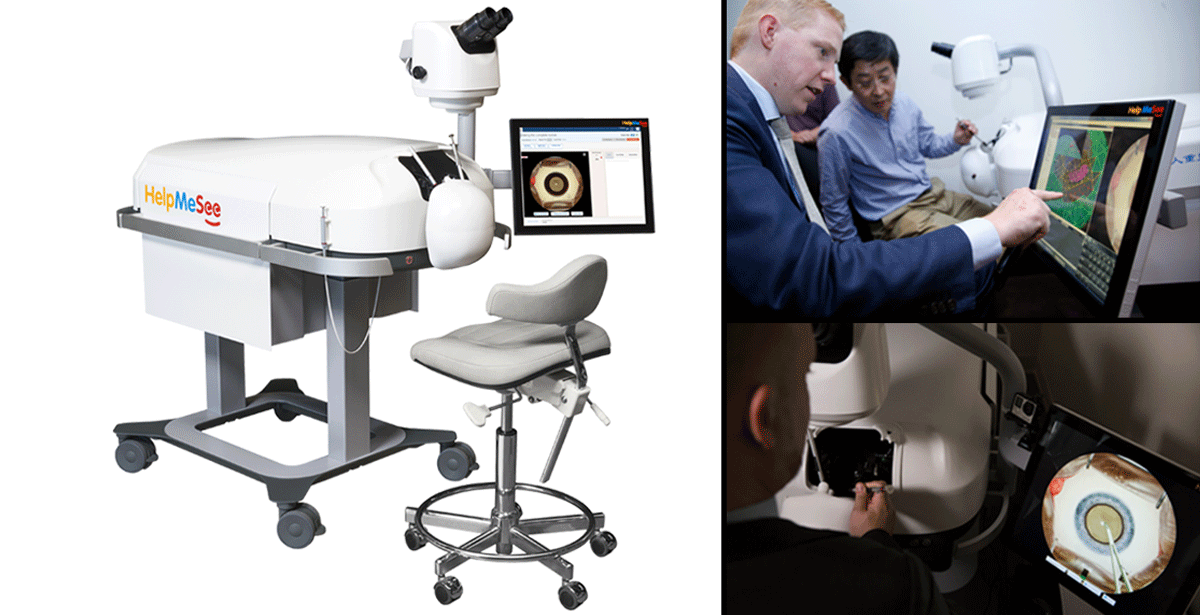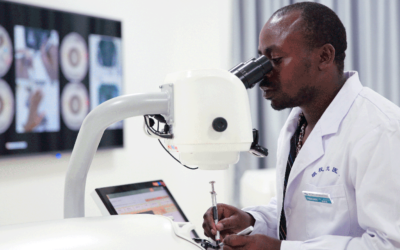“I do not know if blindness is a curse but sight is a miracle.” – Unknown.
The Impact of Sight
Innovators create to fulfill a need to make life easier, better or safer. The latter spurred HelpMeSee’s co-founder, Al Ueltschi to create FlightSafety International in 1951, a global leader in aviation training using simulation technology. Al’s experience at Flight Safety led him to co-found Orbis International in the late 1970s, the world’s first Flying Eye Hospital, and more recently HelpMeSee.
Al saw the full impact of eyesight on a person’s life when he witnessed a mother seeing her child for the first time in years after regaining sight. It was at that moment that Al decided to devote himself to doing whatever he could to restore sight to the treatable blind.
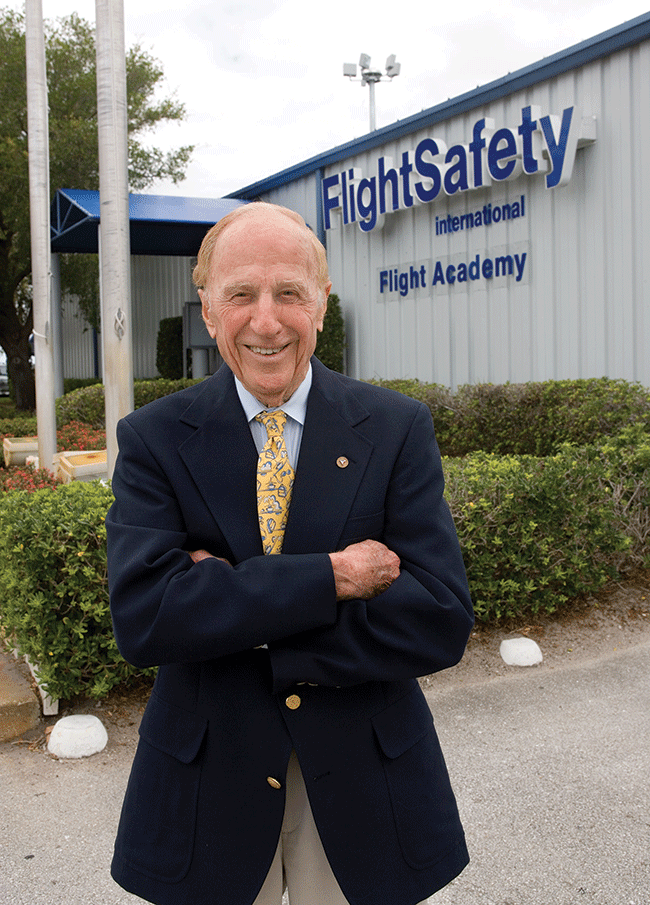
Albert. L Ueltschi 1917-2012
FlightSafety’s incredible success in aviation training transformed the aviation industry and Al felt that simulation technology was the best way forward in training people to treat cataract disease. HelpMeSee’s goal is to train the 30,000 cataract specialists needed to address the shortage of specialists required to treat the developing world’s cataract blindness backlog, where currently there are as few as 1-2 ophthalmologists per million people.
The centerpiece of Al’s new mission, an organization by the name of HelpMeSee and their Eye Surgery Simulator was envisioned to train specialists in Manual Small Incision Cataract Surgery (MSICS), a 5 -minute procedure that removes cataracts without the need for a suture. MSICS costs 1/100 of the amount of other cataract procedures.
Traditional cataract training methods have severe limitations that complicate the process of producing the number of surgeons needed to end cataract blindness. Trainee’s use “wet labs” where the student practices on the eyes of deceased animals. Afterward, senior specialists are required to monitor students during all “live” procedures. This requirement lengthens the training time to avoid injury to patents.
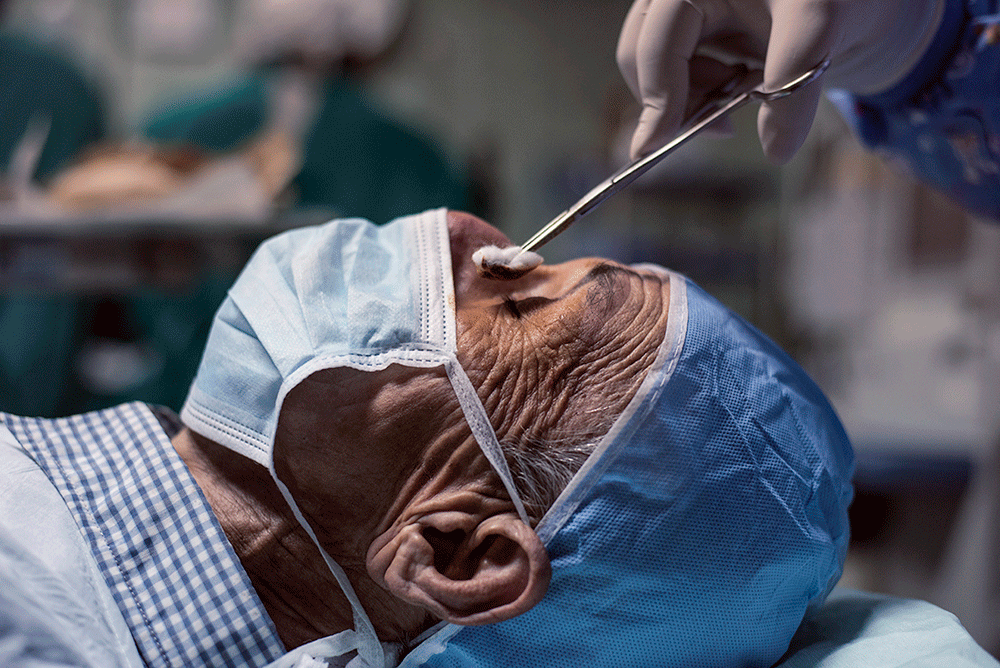
The use of a high-fidelity simulator to teach MSICS is far more progressive in its approach by allowing the student to practice on a computer model, which develops their muscle memory and perfects their surgical skills. Al knew that developing this simulator with the of complexity needed for this task would be extremely difficult. But he trusted his team of engineers and medical professionals.
A Call to Help Those Less Fortunate
One crucial member of the HelpMeSee simulator development team is Chief Simulator Subject Matter Expert, Dr. Glenn Strauss. Glenn left his private ophthalmology practice in 2004 to devote his life to the forgotten blind by promoting and teaching the MSICS cataract procedure to others. HelpMeSee’s simulator project provided Glenn with the opportunity to achieve this dream. Both Glenn and Dennis Gulasy, former Head of Simulation at FlightSafety, worked tirelessly on the specifications, design, and performance of the eye simulator.
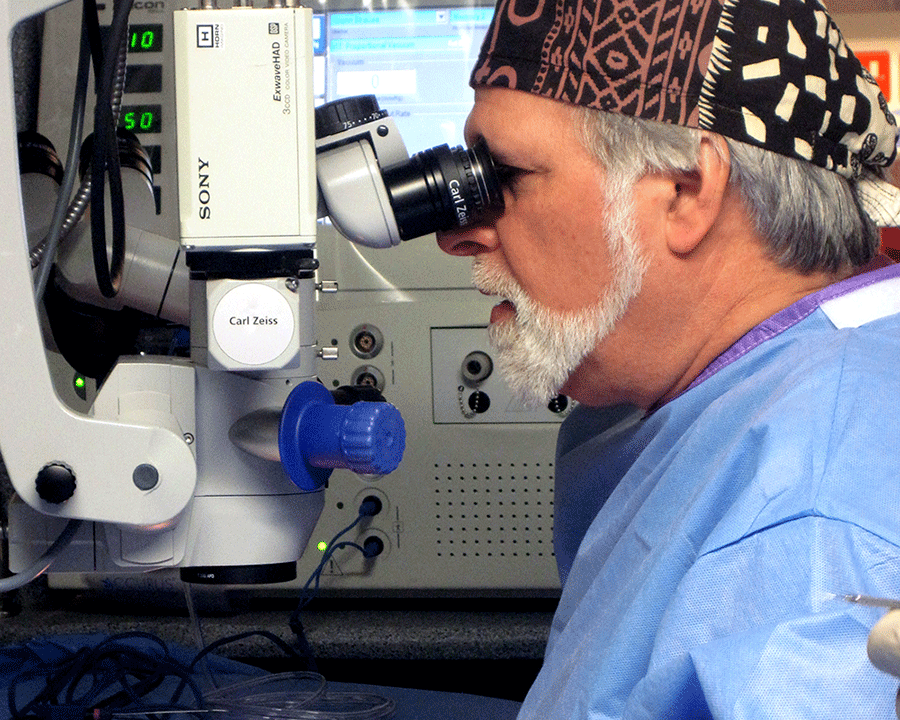
Dr. Glenn Strauss.
Glenn also authored the MSICS training eBook that describes the facets of the MSICS procedure as well as all possible complications and how to treat them when they occur. The HelpMeSee eBook also addresses non-medical topics, such as how to set up a clinic in an area with limited resources, lessons on medical ethics, and business practices for cataract clinics.
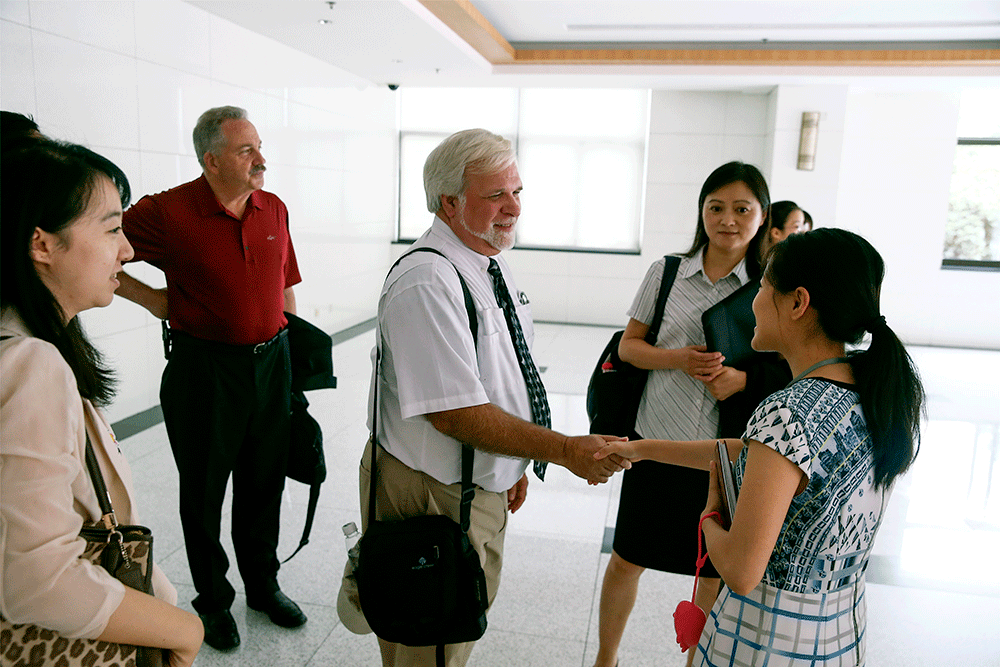
The HelpMeSee Eye Surgical Simulator and Training Courseware
The simulator incorporates sets of complex physics models built upon thousands of hours of data. The training experience mimics the true-to-life sensation of operating on an actual patient. The student can feel the same response of an eye against their surgical instruments. The simulator records practice sessions so the instructor and student can analyze performance at the conclusion of each training session.
The HelpMeSee Eye Surgical Simulator and Training Courseware
The simulator incorporates sets of complex physics models built upon thousands of hours of data. The training experience mimics the true-to-life sensation of operating on an actual patient. The student can feel the same response of an eye against their surgical instruments. The simulator records practice sessions so the instructor and student can analyze performance at the conclusion of each training session.
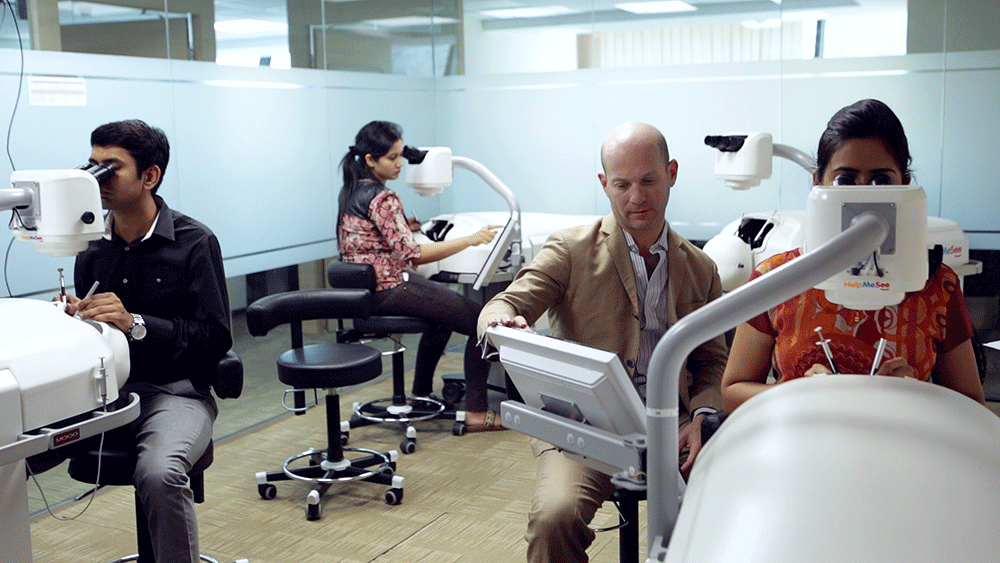
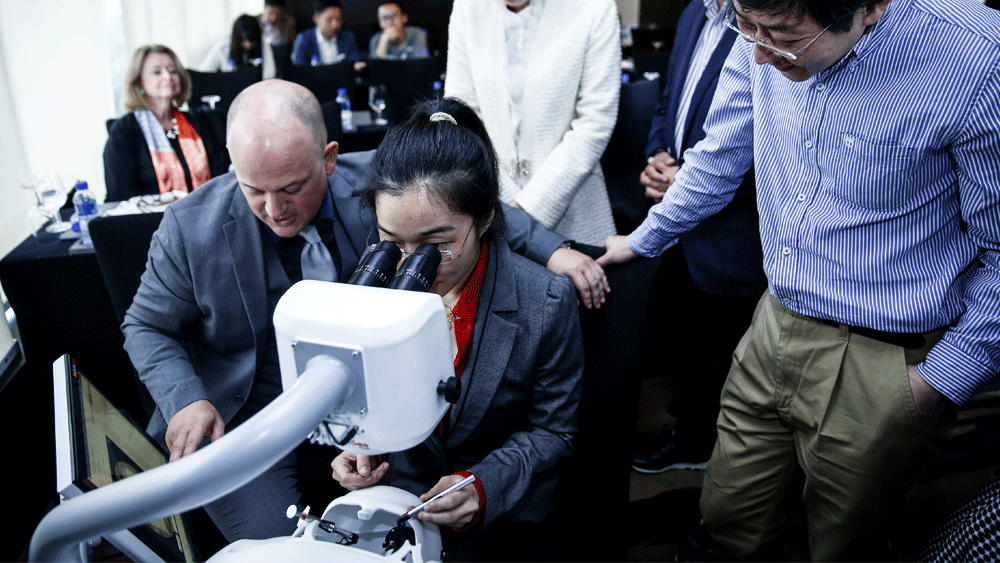
The MSICS training course consists of the eBook, classroom instruction, simulator practice, and class time. The eBook’s simplified wording, high-quality images, and animated graphics are written to transcend cultures, educational backgrounds, and languages. It includes live surgery videos and questionnaires with prompts for group discussions. The format of the eBook is designed so the student can study independently, with a tutor or a group. At the end of the course, each student receives a qualification in MSICS that certifies their ability to operate on live patients.
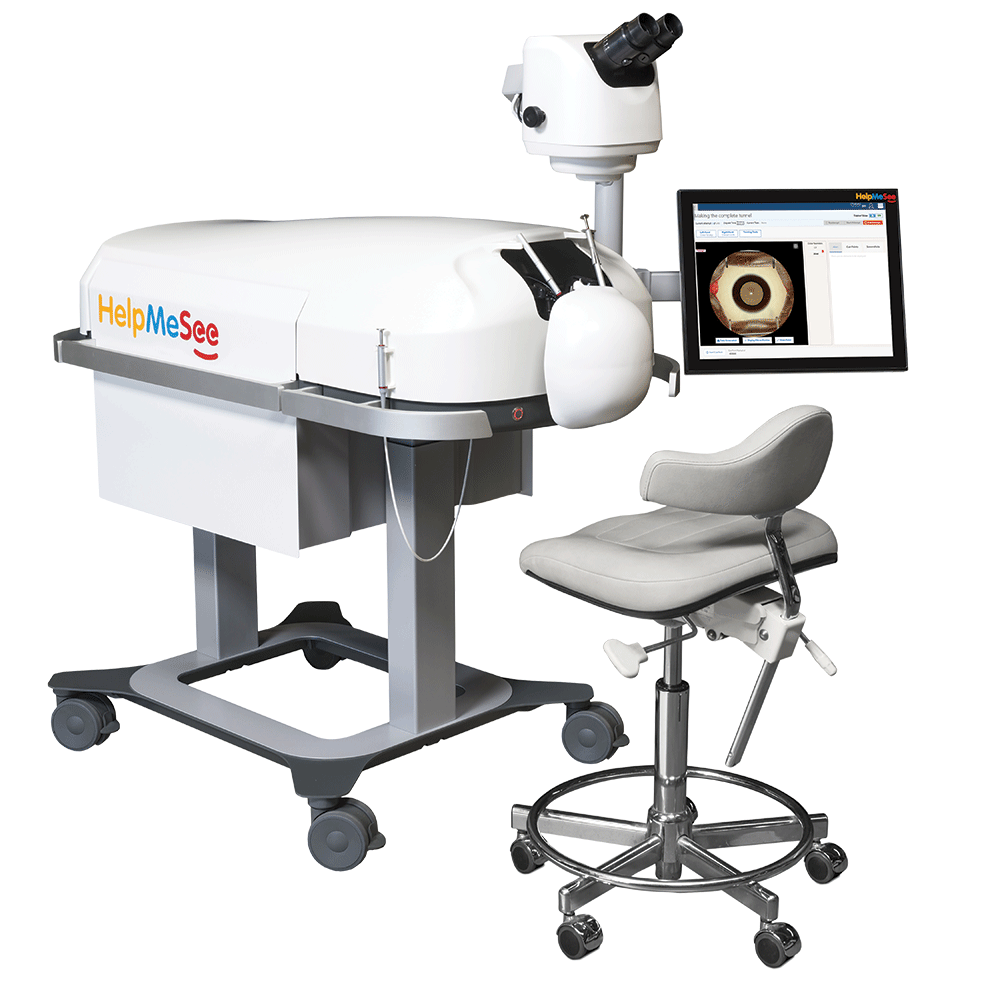
HelpMeSee Eye Surgical Simulator.
In the fourth year of HelpMeSee’s history, two more prototypes debuted winning the 2014 Good Industrial Design Award. It was in the following year, 2015, that the simulator made its first public demonstrations at the Gates Foundation sponsored event in Beijing, China, and at the First MSICS World Conference in Pune, India.
Upgrades to computational systems and software continued. In 2016 the simulator achieved beginning to end high-definition simulation for the MSICS tunnel incision, the specialized technique making MSICS possible.
In 2017 the Tunnel Construction Course Module was completed in preparation for the development of additional intraocular training components to follow.
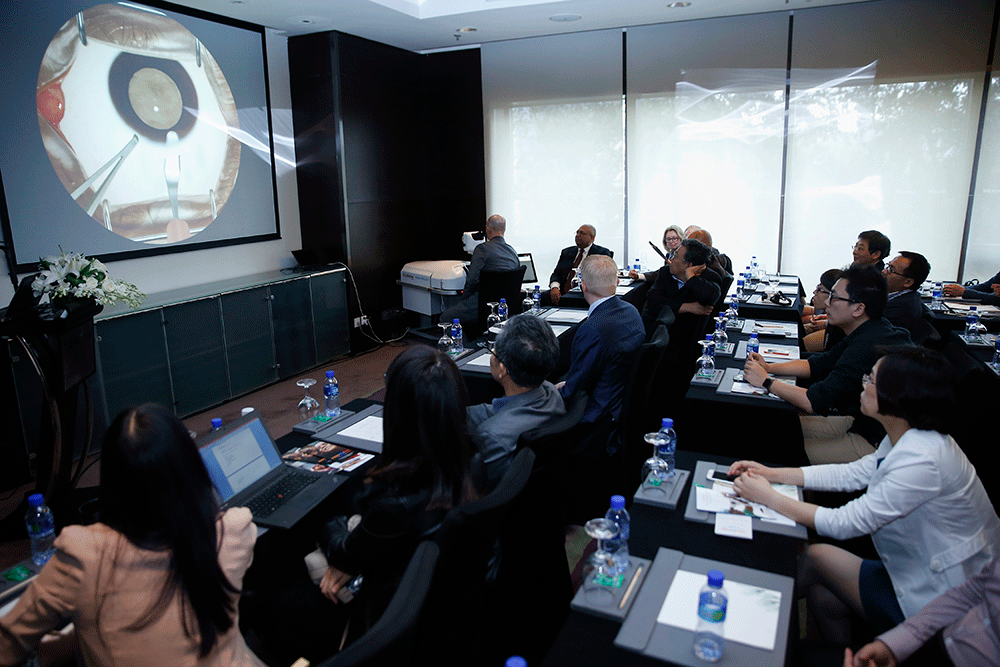
2015 World MSICS Conference.
A Sustainable Solution that Addresses a Developing World Need
President and CEO of HelpMeSee, Jacob Mohan Thazhathu speaks of HelpMeSee’s eye simulator and training program as the only practical solution to scaling access to cataract treatment in the developing world. Cataract blindness is a disease of the poor. By treating blindness, those cured can once again work and provide for their families. This makes HelpMeSee more than just a philanthropic charity. It is also an economic stimulus on the order of billions of dollars of increased GDP. And in this instance, the technological advances that HelpMeSee will create will be used in the areas they are needed most.

